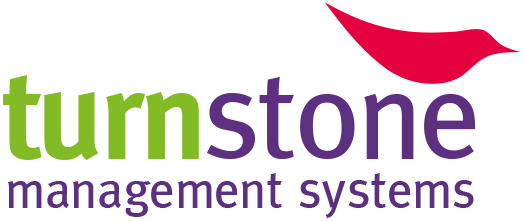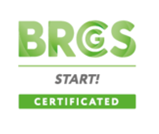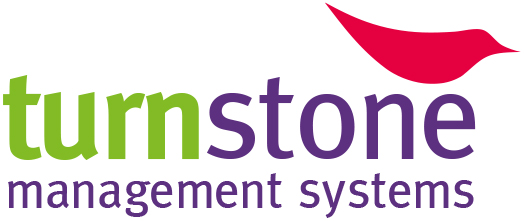Title Page
-
Site conducted
-
Conducted on
-
Prepared by
-
Location
-
Total number of vehicles in fleet
-
Number of vehicles sampled
4 General
4.1 Insurance
-
Have management ensured that they have applicable insurance cover for the organisations activities, detailed in a schedule where appropriate?
-
Premises
-
Vehicles
-
Customers' vehicles and property
-
Personal injury
-
Public liability
-
Employers' liability
-
Contractual responsibilities.
4.2 Environmental emissions and generation of waste
-
Does management ensure that road breakdown and recovery vehicles are used for operational and business purposes only, except with express permission from management?
-
Does management communicate to employees the benefits of fuel efficient driving techniques and the benefits of switching off vehicles when not required, to assist in the reduction of roadside emissions?
-
Does management give regard to the need to select vehicles that minimise the emissions of pollutants and greenhouse gases?
-
Does management identify the waste streams generated by their activities and ensure all waste products are effectively captured, segregated, where required, and securely stored? These shall be recycled or disposed of via authorised persons and waste transfer records should be retained?
-
Does management ensure registration or exemptions are held with the appropriate enforcement authority for the carriage of waste where required?
-
Does management ensure procedure training and appropriate equipment is provided to road recovery operatives and technicians in order to deal with roadside spillages that occur during the breakdown, recovery or removal operations? This shall include an escalation process to ensure appropriate authorities are notified of any spillages which cannot or should not be dealt with by the road recovery operator?
4.3 Agreements with public sector bodies, Highways England or the police service
-
Where agreements exist or are entered into, management shall incorporate any such agreements between their organisation and motoring organisations, public sector bodies, Highways England or the police service concerning the provision of breakdown, recovery and removal services, into their standard operating procedures in accordance with Clause 5.
5 Standard Operating Procedures
5 Standard Operating Procedures
-
Management shall document, implement and maintain standard operating procedures and shall contain as minimum requirements information relating to:
-
Induction training for vehicle technicians
-
Competence assessments and refresher training for vehicle technicians
-
Vehicle technicians identity cards
-
Specific equipment to be carried on vehicles
-
Inspection, maintenance and examination of road recovery vehicles and equipment
-
Cleanliness and tidiness of road recovery vehicles
-
Policy on PPE use, maintenance and replacement
-
Customer Service
-
Disabled and vulnerable customers
6 Vehicles
6.1 General
-
Does management ensure that road recovery vehicles are fit for their intended use?
-
Does management ensure that all vehicles used for recovery or removal have a current MOT or certificate of roadworthiness issued by the DVSA?
-
Does management ensure that all persons driving/operating vehicles are trained to ensure that they have a full understanding of their obligations and responsibilities in UK/EU law for the vehicle they drive and its load. Recorded documentation shall acknowledge confirmation of this understanding and obligation?
-
Does management ensure that any vehicle that is not roadworthy is not allowed to commence or continue a tour of duty?
6.2 Inspection and Maintenance
-
Does management ensure that regular safety inspections of road recovery vehicles are pre-planned and completed by competent persons?
-
Does management ensure that a system of reporting and recording defects is in place and those records of defects and repairs are maintained?
-
Does management ensure that road recovery vehicles are serviced, examined, tested and maintained by competent persons in accordance with the vehicle and equipment manufacturers’ requirements and recommendations. Detailed records of inspections, servicing, examination, testing and maintenance shall be maintained and be readily available for a period of fifteen months or as directed by the Traffic Commissioner?
6.3 Cleanliness and tidiness
-
Does management instruct technicians on how to maintain clean and tidy vehicles, including securing tools and other equipment in the cab?
6.4 Seatbelts
-
Does management ensure that road recovery vehicles have seat belts fit for use on each seat?
6.5 Work Lamps
-
Does management equip road recovery vehicles with work lamps for the illumination of a breakdown, recovery or removal area to facilitate safe working?
6.6 Emergency warning lights
-
Does management ensure that road recovery vehicles are fitted with a minimum of two high level amber coloured warning lights independent of the vehicle’s normal lighting system or beacons capable of emitting a flashing or rotating beam of light through 360°?
-
Does management ensure that lights or beacons are fitted in such a position that they are not obscured from either the side or rear by other equipment carried by or fitted to the vehicle in accordance with the United Nations Commission for Europe (UNECE) Regulation 65 on Special Warning Lamps [N3]?
6.7 Company details
-
Does management ensure that the company trading name and contact details<br>are displayed on road recovery vehicles, using either permanent or magnetic<br>livery, except where contract requirements, such as those for the police service<br>or Highways England, insurance requirements or particular sensitive locations<br>make this impractical?
6.8 Livery
-
Does management ensure that road recovery vehicles, trailers and any lifting<br>apparatus are conspicuously liveried to maximize their visibility at the scene of<br>a breakdown, recovery or removal?
6.9 Towing Equipment
-
Does management ensure that the towing hitch that can be fitted to any<br>road recovery vehicle is suitable for the safe recovery/removal of all forms of<br>trailers (including caravans and boat trailers). The towing hitch shall also be fit<br>for purpose and capable of the safe recovery/removal of vehicles when using<br>towing equipment, e.g. tow pole, “A” frame or towing dolly?
7 Road recovery vehicle equipment
7.1 Management Responsibilities
-
Does management ensure that road recovery vehicles carry the tools, equipment<br>and safety equipment necessary to carry out the type of work they are required<br>to undertake in a safe and professional manner?
-
Does management keep up-to-date inventories of the tools and equipment kept on each vehicle?
7.2 Techicians' responsibilities
-
Does management ensure that technicians comply with training provided by<br>management on tools and equipment on road recovery vehicles?
-
Does management ensure that technicians are responsible for ensuring that<br>tools and equipment are in safe and efficient working order and that any that<br>are unfit for use are removed and reported to management?
-
Does management ensure that technicians do not use tools and equipment<br>unless they are trained and competent in their use?
7.3 Vehicle lifting equipment including winches and winch ropes
-
Does management ensure that all vehicle lifting and pulling equipment,<br>including winches and winch ropes, is maintained and is in safe and serviceable<br>condition?
-
Does management ensure that the SWL or WLL, as applicable, is marked on the<br>vehicle lifting equipment or the winch casing, and is displayed in a prominent<br>position so that the technician is aware of it?
7.4 Communication System
-
Does management ensure that technicians are equipped with and trained in<br>the use of a communication system that enables them to communicate from<br>the road recovery vehicle or at the roadside?
8 Personal Safety and Protective Equipment and Clothing
8.1 General
-
Does management provide technicians with suitable safety or protective<br>equipment and clothing based upon a risk assessment of the type of work<br>carried out, activities undertaken and situations likely to be encountered?
-
Does management ensure that technicians understand what PPE is to be used,<br>how and in what circumstances?
8.2 Essential safety and protective personal equipment and clothing
-
Management shall provide, and train the technicians to wear as a minimum, the following PPE and clothing at all times while working:
-
Highly visible reflective clothing and clothing in accordance with 8.4a), apart<br>from whilst driving or working indoors;
-
Safety footwear
-
Uniform or overalls bearing the identity of the organisation
8.3 Additional safety and personal protective equipment and clothing
-
Does management complete a risk assessment to identify any additional safety<br>and protective equipment and clothing and ensure technicians are trained in the<br>use of any such equipment supplied? Including:
-
Eye protection
-
Safety Gloves
-
Safety headwear, e.g. hard hats or bump caps
-
Ear defenders
-
Traffic cones, warning triangles and divert arrows
8.4 Standards for personal safety and protective equipment
-
Safety or personal protective equipment and clothing supplied shall be suitable
and conform to the following standards as a minimum requirement: -
High-visibility garments and accessories for use on the highway shall conform<br>to BS EN ISO 20471:2013+A1:2016, Class 3 as a minimum.
-
Personal eye protection shall conform to BS EN 166.
-
Footwear shall conform to BS EN ISO 20345.
-
Protective gloves shall conform to BS EN 388.
-
Safety helmets shall conform to BS EN 397.
-
Ear defenders shall conform to BS EN 352-1.
8.5 Condition of personal safety and protective equipment
-
Does management ensure that any non-serviceable items are replaced<br>without delay and that reflective clothing is washed in accordance with the<br>manufacturer’s instructions to avoid delamination of the garment?
8.6 Situations involving hazardous chemicals or dangerous substances
-
Does management ensure technicians are instructed not to attempt to handle<br>any hazardous substances unless they have received the necessary training and<br>have access to the appropriate protective clothing and equipment. If in any<br>doubt, they or their organization shall contact the vehicle owner/road recovery<br>operator or the fire service and request assistance?
9 Premises
9.1 Suitability
-
Does the organisation operate from premises that are suitable for the purpose of their business and ensure that all necessary planning approvals are obtained?
-
Does management ensure that the premises are kept clean and tidy and well<br>maintained at all times?
-
Premises at which customers can be present shall have the following facilities:
-
Sufficient secure parking and/or storage on site for the customers’ vehicles and personal effects;
-
Waiting room facilities with suitable seating arrangements;
-
A telephone available for customer use;
-
A drinks facility;
-
Cloakroom/toilet facilities, which shall be available and kept clean;
-
A clearly displayed complaints procedure which shall also be publically available on request.
9.2 Company trading name
-
Is the company trading exhibited on the exterior of the premises, unless planning regulations or leasing or contractual arrangements prohibit this? Where planning regulations prohibit the erection of the company name, a letter from the appropriate authority shall be obtained.
10 Technicians
10.1
-
Does management ensure that all technicians are competent, (see 3.4) to<br>carry out their activities?
10.2
-
Does management ensure that all technicians carry an identity card issued<br>by their organization or an approved national occupational scheme, e.g. the<br>National Training Scheme?
10.3
-
Does management ensure that when recruiting a technician a check is<br>made on all elements of their driving licence and that they hold a current Driver’s<br>Qualification Card (DQC), which shall be correct for the vehicles to be driven?
-
Are these checks recorded?
-
Are driving licence checks completed at least annually?
-
Are checks conducted on driver ability in relation to the class and type of vehicle to be driven.
10.4
-
Does management ensure that all technicians are able to access and use<br>standard operating procedures and SURVIVE Best Practice Guidelines [N1]?
10.5
-
Does management ensure that technicians are working in accordance with<br>their training and company standard operating procedures through regular<br>audits?
-
Are systems in place to record and review the collection of “near misses”, accidents and incidents in order to analyse and reduce risks to technicians?
10.6
-
Does management ensure that all technicians are made aware that<br>risk assessment at the breakdown, recovery or removal scene is their<br>responsibility?
11 Training competence and behaviour of road recovery technicians
11.1 General
11.1.1
-
Does management ensure that training and competency skills for<br>technicians working at the roadside shall be provided by a scheme traceable to<br>the National Occupational Standards?
11.1.2
-
Is documented evidence of the training material reviewed against the national occupational standards?
11.1.3
-
Is the training programme delivered by a suitably qualified individual? Trainers shall meet the following requirements:
-
has two years’ relevant experience within the vehicle breakdown and recovery industry;
-
holds current industry recognized qualification(s)/accreditation(s) (maximum of five years from issue date) in health and safety, customer service, and assessment of the roadside situation;
-
holds a recognised training qualification;
-
has competence in the specific breakdown/recovery equipment to which they are delivering training;
-
within five years (maximum) of the initial certification (as above), has updated their knowledge/skills required to perform each task through measurable continuing professional development (CPD).
11.1.4
-
Does technician training include an assessment of the understanding and competence of those attending? Are records of training maintained by the employer?
11.1.5
-
Are records retained to demonstrate that training has been<br>delivered. Such records shall detail training courses attended including dates<br>attended, course duration, trainer’s name, pass, fail or referred, as applicable.<br>Auditable proof of training shall be available upon request for examination<br>during certification/inspection body assessments?
11.1.6
-
Does management ensure the most recent edition of the SURVIVE<br>Best Practice Guidelines [N1] and documented training and operational<br>requirements detailed in the organisations’ standard operating procedures are<br>made available to technicians and any other relevant personnel?
11.2 Induction Training
-
Does management ensure that their vehicle technicians have undergone induction training that covers all aspects of the work to be undertaken?
11.3 Competence assessments and refresher training
-
Does management ensure that all technicians demonstrate their competence in the areas specified within 11.1 and 11.2 periodically and shall define the requirements for this assessment within the standard operating procedures (see<br>Clause 5)?
-
Does management ensure that technicians are provided with refresher training if required?
-
Does management ensure that records of competency assessments are maintained?
12 Customer Service
12.1 General
-
Does management ensure they have provisions in place relating to the delivery of customer service?
12.2 Disabled Customers
-
Does management ensure that arrangements and procedures are in place to<br>ensure that disabled customers are not treated less favourably than others<br>because of their disability?
-
Does management implement reasonable adjustments to assist disabled people<br>to access their facilities and services based on the information provided relating<br>to the disability?
-
Does management ensure that suitable training is provided to employees to<br>ensure that they understand how they can best meet the needs of disabled<br>customers?
12.3 Vulnerable customers
-
Does management ensure that systems and standard operating procedures are in place to:
-
identify vulnerable customers;
-
protect vulnerable customers;
-
provide guidance on dealing with emergency situations.
-
Does management ensure that systems and standard operating procedures are in place to:
-
identify whether any children, pets, domestic animals or livestock are being carried in casualty vehicles;
-
provide relevant dynamic risk assessment training to technicians;
-
provide guidance on safe working procedures and dealing with customers;
-
provide guidance on dealing with emergency situations.
12.5 Complaints
-
Does management ensure that a complaints procedure for use of customers at the roadside is in place and that customers are made aware of it?








